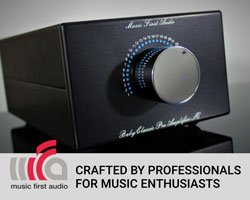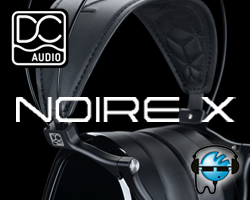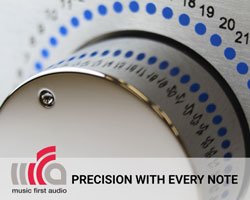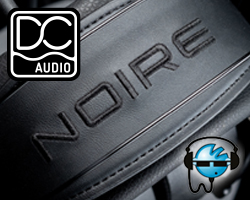You might not have heard of Lukasz Fikus but you’ll have probably of heard of Lampizator. They are one and the same – Lukasz, a Polish electrical engineer with a masters degree in high voltage physics is Lampizator and as such is responsible for one of the more interesting hi-fi pages on the web today. The site started as a blog, where his design musings and irreverent dissection of high end brands revealing what was actually going on behind the silver tongued marketing spiel and brushed aluminium fascias garnered him a cult following. These days Lampizator is more boutique manufacturer than modder, with several employees and rave forum reviews under his belt. His own valve output stage design, subsequent mods and kit DACs have been well received, selling well through the online store.
A clickable button on this online store links to a newer page and Fikus’ primary commercial venture, a digital to analogue converter. The Lampizator DAC is the fruit of years spent refining his home brew analogue circuit and comprehensive testing of pretty much every DAC chip commercially available. The resulting product is a purist’s dream – handpicked components, bespoke PCBs, opamp free design and massively over specified power supplies and capacitor banks ensure the best design possible for the five product levels available. These models are marketed as DACs one to five, with components becoming more exotic as the price increases. Shrewd marketing, and surely a nod to the Audionote up selling strategy that Fikus admits to admiring.
Optional extras are available at any level and the unit sat in front of me is pretty well loaded – A non upsampling level four box with balanced output, remote control volume pot and USB input capable of 32 bit/382 KHz replay. I’m fortunate enough to have two well regarded players in house to compare it to. The Resolution Audio Opus 21 and Audio Aero Capitole MK II might be older designs but seeing as both are considered as two of the best digital sources ever produced I figured the Lampizator DAC is in good company. I’ll feed all three with lossless gems from the superb squeezebox based Lampizator Transport via the coax inputs.
I spend some time listening before making any comparisons. The Lampizator needs a few tracks to get up to temperature but it’s immediately clear that this might well be something rather special. Bon Iver’s second long player ‘Bon Iver’ is a superb collection of songs that might have been mastered a little better. The Lampizator DAC manages to wring every last drop of goodness from the content and produces a wonderfully balanced, spacious sound that places instruments where I expect them to be. Tonal reproduction is true and the decay of the lingering notes on these delicate recordings is delicious. The sound has warmth but never bogs down or overblooms. A pretty good start.
Hours and days of listening pass and I realise that this is going to be a difficult review to write. I’m struggling to listen critically. I keep sitting down to analyse the sound but I’m getting too wrapped up in it to make any notes. I’m listening to Husky Rescues ‘Other World’ remix LP and the open sound is completely involving. I’m writing down words like ‘balanced’, ‘musical’, ‘perfectly weighted’ and ‘just right’. It’s much easier to describe a sound that has strengths and weaknesses – the Marantz SA KI pearl for instance, that punched out the best low end reproduction I’ve heard but lacked emotion. Or the Eastern Electric tube DAC that was all I ever needed until it lost its way with complex classical pieces. This Polish DAC seems to be able to do everything the music asks of it and walks the tightrope of detail retrieval and musical enjoyment effortlessly. I listen to some Joni Mitchell and the playback of guitar notes impress; a top to bottom, lifelike full scale pluck or strum. The open airy vocal breezes through the room, taking my breath away.
Time for some objective comparison. The Resolution Audio first, with both sources connected with identical Mogami interconnects. Some Jill Scott suggests that the Lampizator DAC has a more natural top end than the Jeff Kalt’s Opus which is shown up as a little shrill in comparison. Mids are well matched and both players plumb the depths well. It’s not night and day (and rightly so at this level) but I call the Lampizator as the more open, enjoyable sound four times out of five in a blind listen with a couple of different albums. On to the Audio Aero and a Laura Marling audition. Here the Lampizator dac out analogues the French player, sounding every bit as warm and undigital whilst providing a good dose more detail and excitement. This is noticeable on percussion, with drums seeming to have more hit and vitality. A switch to some techno and Nicholas Jaars ‘Space is only noise’ shows that Lukasz’ creation parties harder than the Capitole, dishing out more slam and authority. Wonderful stuff.
As you may have gathered I’ve rather enjoyed my time with the Lampizator DAC. I’m astonished by the near perfect balance of the sound. A deep, rich musical listen that still produces enough expertly edged detail for everyone bar maybe the chap in the corner dressed from head to toe in Weiss clothing. There we are then. It’s superb and you should all buy one. The end. Tea and medals all round.
Not quite. Not until we’ve talked about the price. The standard Lampizator DAC level 4 with single coaxial input costs *4,200€. The bells and whistles level 5 unit lists at 6,000€. That’s right. Six thousand euros. That’s a huge amount of money and puts the DAC head to head with some of the very best solutions in the world. The beautiful EAR Yoshino Acute 3, for instance – a one box CD player with analogue remote volume control, USB, coaxial and optical inputs that costs £4,350. The latest Audio Aero Capitole Reference isn’t priced that differently to the review unit and has a more impressive spec sheet with supermodel looks to match. The Audio Note 3.1x II might not turn heads but the brand has a committed following and ‘proper’ hi-fi heritage to help underpin the cost. I could go on. I’m quite sure that the Lampizator DAC could hold its own against these hifi thoroughbreds but the nondescript black box finish is functional at best and I worry that buyers might expect more than just superb sound at this price point. If I had 6,000 euros to spend on a digital source I might want it to look the part and this would be a difficult unit to show off visually. I might also want a badge that screams hi-fi royalty, a trophy of a purchase. The Lampizator brand doesn’t quite pull that off, although the five year warranty is a good shout.
The designer would say I’m missing the point of course. He’d say that a buyer is spending the money on the design and the top drawer components. He’d say that this unit is for enthusiasts concerned with getting the very best sound they can buy for the money and that the look of the unit is of secondary importance. He’s probably right and I hope potential buyers agree with him. They’ll be missing out on one of the very best sources money can buy if they don’t.
Author – Jake
As part of Hifi Pigs continuing efforts to bring you balanced reviews the Lampizator DAC 4 was sent round to Jerry for a few days and here are his findings.
Lampizator Level 4 DAC
Lucky fellow that I am, I’ve been given the opportunity of a “2nd opinion” review, to follow on from Jake’s full assessment, already published on Hifi Pig.
Ignore if you can the rather basic aesthetics of the Lampizator DAC, functionally I have no quibble with it. Enough digital inputs for me and a remote controlled volume. Just fine. Although in all honesty I would be looking for a much higher standard of casework and finish at the price.
The following comparative review of the sonics was performed against my trusty Resolution Audio CD50 CD player – one of the top players in its day and still very highly thought of.
I used the transport section of the RA CD50 to feed into the Lampizator DAC using an Apogee WydeEye co-ax (RCA) digital cable. Switching between the two sources was easy with my Krell KRC-3 pre-amp – just a press of a single button on the Krell’s remote control did the job. Levels were different between the CD50 and the Lampizator, but these were matched with the Lampizator volume control.
At first I did not think I’d have much to write about. The sonics from the Lampizator Level 4 DAC are very similar to my RA CD50. But as listening extended it became increasingly obvious that the Lampizator was significantly superior.
Dynamic contrasts were a little clearer and image focus sharper, allowing a better portrayal of 3D soundstage depth. Tonal colours were just a little better saturated and more interesting. Resolution of fine detail was also just a touch superior.
Bass weight and definition were pretty much identical, and excellent! Perhaps the Lampizator had a little less dynamic punch in the mid-bass, but there was a more subtle level of dynamic inflection which more than made up for this.
I would guess that another 9 or 10dB of output level is available from the Lampizator DAC compared to the standard 2V from my CD player. Counter-intuitively, I have a feeling that the sound is a little freer and faster when the volume level was at -10dB compared to when the volume control was fully open at 0dB. It seemed a little buttoned-up and tight, a bit slower to track dynamic changes in the music, with the volume control wide open. But this may be down to my Krell pre-amp’s sound changing with gain level – the pre-amp volume setting had to be lowered when the Lampizator DAC level was raised for the same sound level to be achieved. So I would not like to be definite about this finding.
To summarise, the fairly small but musically important sonic differences noted were pretty much all in the Lampizator DAC’s favour, resulting in a sound that overall was a definite notch or two up from the DAC in my own excellent CD player. If the Resolution Audio CD50 were given an arbitrary 10 points for sonic performance, then I’d probably say the Lampizator DAC raised that to 12, maybe 13. In its day my RA CD50 player retailed at £2,000. The Lampizator DAC costs substantially more than that, and even allowing for inflation over the last 10 years or so the cost differential is very large. Is it worth it? Well, I for one will miss it when it’s gone! It’s the best digital playback I have heard, and the best all too often comes at a price premium.
Review system: MBL 116F speakers, Parasound Halo A21 power amp, Krell KRC-3 pre-amp, Resolution Audio CD50 CD Player
*Prices are taken from the Lampizator website plus 20% VAT but no delivery charges are added.
Want to read more hifi reviews?










































































































































































You must be logged in to leave a reply.